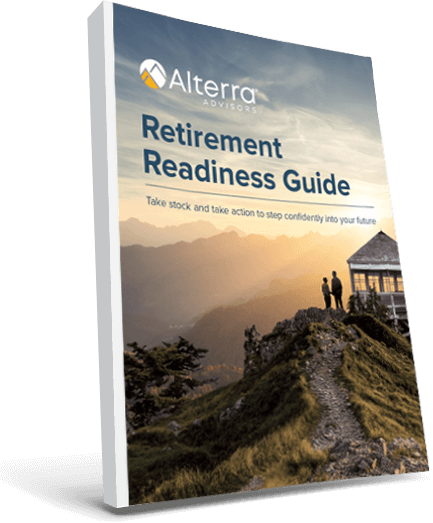Can I really stop working? What will I do?
Can I afford it? Have I saved enough?
Where will my paycheck come from?
What about healthcare?
Am I ready?
These are great questions and you’re asking them at the right time: before you’ve stopped working. So, what does the road to clarity look like? When building comprehensive retirement plans, we always include three big questions. Use these to get an idea of how ready you are to retire!
1. What’s my number?
Your “number” is the amount you need in your nest egg to replace your income and live your dream retirement life. Once you know your number, you’ll compare that with the balance of your retirement portfolio and have a good idea if you’re ready to retire. To find your number, you’ll need two important points:
- Monthly or annual expenses. Carefully tally how much you need to keep the lights on each month, including healthcare expenses. Then, add your fun budget: funds to travel, spend time with family, and check off your other bucket list items. We recommend trying to factor in big single expenses, as well, like replacing your roof or buying a new car.
- Income sources. How much will you receive from pensions, social security, and rental income? If you plan to work part time at something you enjoy, factor this in, as well.
- Income gap. With your total need and automatic monthly income established, we can identify how much you’ll need to draw from your nest egg each month.
Don’t skimp on this process. The biggest risk to most retirement plans is overspending, so it’s important to get this right! Once you know your income gap, your “number” is the amount you need to reliably generate that income each month throughout retirement.
Let’s run an example
Based on this exercise, you learn:
- $10,000 is your monthly income needed to enjoy retirement.
- $3,000 will come in each month from a pension.
- $7,000 is the monthly income gap you need to fill from investments.
If you expect to earn 5% per year on your portfolio and expect inflation to be 3%, your number is about $2.5 million to generate the income you need, leaving a $1 million buffer left at age 95. We encourage a buffer like this to account for unexpected expenses, market volatility, and any other unforeseen circumstances.
How’s your nest egg looking?
If you’re a little behind, your financial advising team should clearly show you how to fill the gap by saving more, working a bit longer, spending less in retirement, or a combination.
If you’re on track, let’s move on!
2. Where will my paycheck come from?
Now that you know how much to draw from your investments, it’s time to build your income strategy. We discuss this in-depth in Understanding Retirement Income, but we usually see one of two approaches used:
- Golden Goose. If you have enough in your portfolio, you can invest for income and spend only dividends and interest, thinking of your nest egg like a rental property. In this case, you’d set up an automatic monthly withdrawal of $7,000 from the cash portion of your portfolio and only surplus cash would be reinvested.
- Buckets. If you haven’t accumulated quite enough to live on income alone, you’ll want to set up three buckets: safety, income, and growth. Safety is your reserve, something like one year of expenses. Income sends your monthly paycheck, usually holding five to seven years of income. Growth is everything else, invested for higher growth and used to refill the first two buckets as needed.
Your income strategy is a crucial part of your plan. Your portfolio needs to be positioned in the right way to create stable income without sacrificing growth. Once your income strategy is set, you’re ready for the final question.
3. What do I want to do?
The finances are an important part of getting ready to retire. But once the investment strategy is set, many realize they haven’t thought beyond the logistics…how will you actually spend your time? Craig Hamilton has some helpful insight here in 4 Parts of a Joy-Filled Retirement. He says that, like a diversified financial portfolio, your “life portfolio” needs four parts:
- Career continuation, a way to use the skills you built during your working years.
- Volunteering, investment of your time in a cause you care about.
- Family, time with the kids and grandkids who will carry your values and legacy.
- Hobbies, like golf, travel, and other traditional retirement activities are more fulfilling when they serve as a break rather than your entire purpose.
Are you ready?
How’d you do? Are you ready to retire? You might find that your portfolio balance is more than enough, but you’re not sure how to create the income you need. Or you might have found that you still have some accumulating to do and need a strategy. Or perhaps you have far more than you need and are shifting thoughts to making a big impact on the people and causes you care about. In each case, starting with a financial plan can provide clarity in your vision and coordinate the strategies you need to ensure the impact you have in mind is the impact you make!
The above hypothetical example is for illustrative purposes only and is not intended to represent the past or future performance of any specific investment.

Is your retirement as ready as you are?
You’ve saved for years—but turning that into steady income takes more than guesswork. A clear plan helps you avoid mistakes and enjoy retirement with confidence.
The “Alterra” name was coined by joining the Latin roots “alter”, the origin of the word “altruism” with “terra” meaning earth or land. This name reflects the company philosophy of “clients before profits” and providing firmly grounded advice.

